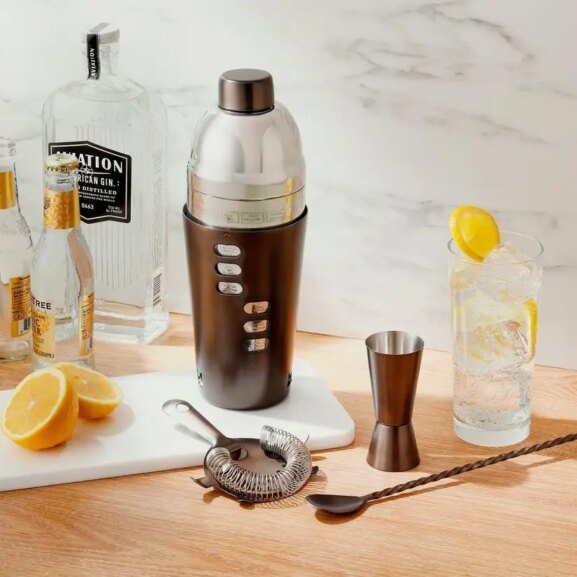Chardonnay vs. Sauvignon Blanc | Wine Enthusiast
On one hand, Chardonnay and Sauvignon Blanc grapes couldn’t be more different, at least in how they’re commonly expressed and popularly understood. Chardonnay is a suave charmer, layered in smooth textures and warm flavors kissed with oak, with comfort as its calling card. Sauvignon Blanc is a brisk refresher, zesty in acidity, crisp on the tongue and bright in grassy, tropical flavors that enliven the palate.
On the other hand, these two contenders are remarkably similar.
Both emerged from somewhat mysterious origins in France, where they rose to recognition as noble grape varieties. They then traveled the world to almost every wine region, where they’re able to reflect microclimates like few other varieties. And they’re simultaneously shapeshifters, both Sauv Blanc and Chard willfully bending toward whatever style a winemaker desires, from the sharp edges enabled by stainless tanks to the round curves cultivated by oak aging.
Same, Same But Different
Thanks to such similarities, the arguments levied when vintners are challenged to elevate one over the other tend to echo a bit.
“No other grape variety makes as diverse a set of styles of wines as Chardonnay, and no other variety can be planted in such a diverse set of regions and climates as Chardonnay and still make good wine,” asserts Richie Allen, who’s been crafting Chardonnay (plus a good amount of Sauvignon Blanc) for Rombauer Vineyards for more than 25 years. “You can plant it anywhere in almost any soil type and it always makes a wine that is relatively palatable. No other variety can do that.”
Or, you can instead trust Kathy Joseph, who founded Fiddlehead Cellars in Santa Barbara County as a Sauv Blanc and Pinot brand back in 1988. “Sauvignon Blanc to me is more terroir-driven than Chardonnay,” says Joseph, who has long been disappointed by the many generic Chards on the market. “Sauvignon Blanc has more variety of character, depending on where it’s planted, how it’s farmed and what you do with it in the cellar. You can pick different Sauvignon Blancs for different moments in your life—what you’re eating, what the weather is like, what part of the world you’re in.”
Joseph’s career inspired the path of John Dragonette and Brandon Sparks-Gillis of Dragonette Cellars, who similarly appreciate Sauvignon Blanc for its variability. “If you want, and you have the right terroir, you can make a Sauv Blanc like Will Ferrell—light, fun, airy—or make one like Robert DeNiro: deep, deadly, serious,” says Dragonette.
Like many wineries in California, the Dragonette lineup includes both Sauvignon Blanc and Chardonnay, so the men are hard-pressed to choose one over the other. “It would be a split decision,” says Dragonette.
Popularity, Backlash and Evolving Palates
But Chardonnay tends to earn more critical praise and commercial status than Sauvignon Blanc, explains Sparks-Gillis, and that may indicate that there’s something more to the variety.
“If you’re splitting hairs, Chardonnay just has this kaleidoscopic ability to be complex and really complete,” he says. “Chardonnay can be enjoyed early and then gains complexity as it ages. It’s rare to find Sauvignon Blancs that can transcend the more everyday style.”
Whereas Chardonnay has enjoyed an endless quest of refinement over the decades, most modern Sauvignon Blanc tends to be made quickly in stainless steel tanks. “You can lose that ultimate completeness of the wine and the concentration,” says Sparks-Gillis.
Both grapes faced uphill battles at different stages of their New World rise. Chardonnay was a victim of its own success, as the buttery styles of the 1990s and early 2000s triggered the “Anything But Chardonnay” movement. That resistance still simmers today, despite the fact that buttery Chardonnays are far less common than they once were.
For Sauvignon Blanc, the challenge was right at the start. “It was virtually given no recognition,” says Joseph of how the now popular varietal was seen when she started out in 1981, when the wines tended to be flat and sweet. That’s when the brilliant vintner Robert Mondavi recast the grapes as serious and dry, naming his versions “Fumé Blanc.”
“The consumer took a huge liking to this new wine,” recalls Joseph. “Sauvignon Blanc suddenly had the opportunity to gain much better definition by considering where the fruit was planted and how it was farmed. I felt like I could be a part of that.”
Her Fiddlehead brand evolved to produce three distinct styles, from fresh and tropical to barrel-aged and rich.
Minimal Intervention, Major Change
The New World’s exploration of Sauv Blanc styles is decades behind Chardonnay’s learning curve. But there are exciting developments on the horizon, according to Erica Crawford, who co-founded the revolutionary New Zealand Sauvignon Blanc brand Kim Crawford. Since selling that brand two decades ago, “I couldn’t put Sauvignon to my lips for four years,” she says with a laugh.
Then, in 2013, she and her husband, Kim, created the organic-minded label Loveblock Wine, where they’re expanding the possibilities of the country’s infamous Sauv Blanc.
“Some people are finding that the classic Marlborough style is a little big and in their face,” says Crawford, who helped make such flavors famous. “We’re exploring and evolving the style.”
Their latest project is using green tea tannin instead of sulfur as a preservative, which is revealing new Sauvignon Blanc characteristics like mandarin, saffron and cumin alongside the grape’s typical jalapeno note.
“We see more and more flavors opening up as we are intervening less and less,” she says. “Sulfur is like a little blanket that gets put over the flavors and the acid at the same time. It’s really quite interesting in this controlled situation to see the difference between the two.”
So, What’s the Verdict?
Perhaps that final bell is yet to ring in this battle.
Chardonnay definitely has the edge when it comes to popularity. “Unfortunately, more customers are familiar with Chardonnay, so I’m on a constant teaching program to open the door for people to consider the different styles of Sauvignon Blanc,” says Joseph. “But I love encouraging people to give it another try, to explore the possibilities out there, because there are so many.”
But there’s at least one benefit that all wine lovers can appreciate when it comes to Sauv Blanc. “Sauvignon Blanc is one of my favorite wines to teach young winemakers how to make,” says Allen from Rombauer. “It’s about precision in how you protect the aromatics. If you can’t get that right, you’ll never be a good winemaker in my book.”
More Chardonnay and Sauvignon Blanc Coverage
From the Shop
Find Your Wine a Home
Our selection of white wine glasses is the best way to enjoy the wine’s subtle aromas and bright flavors.
Published: October 2, 2024

